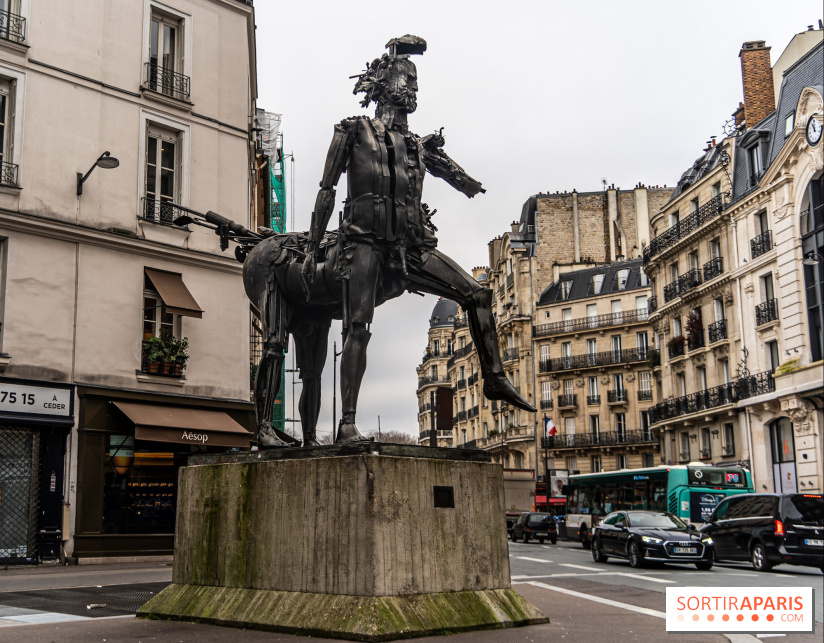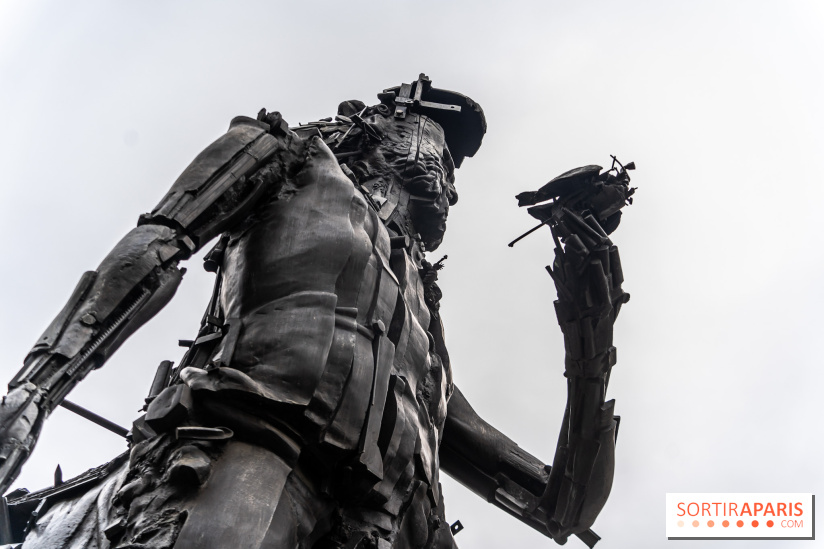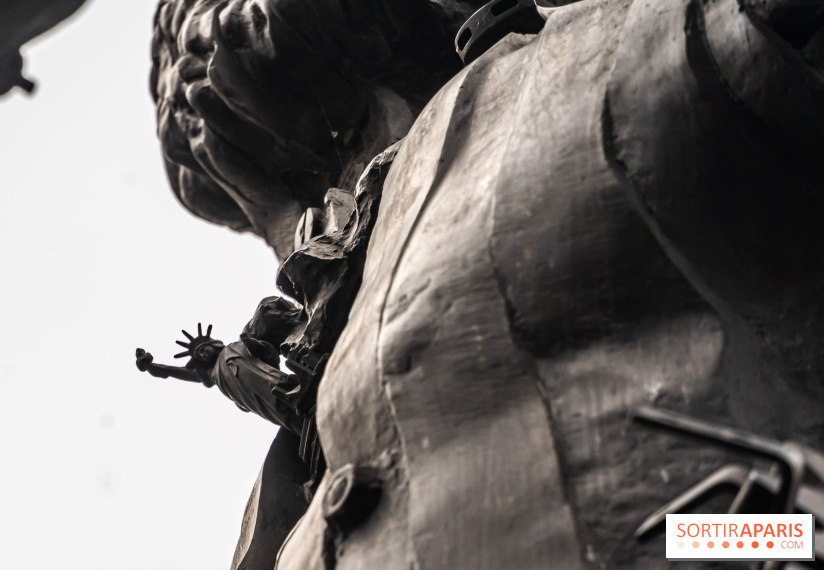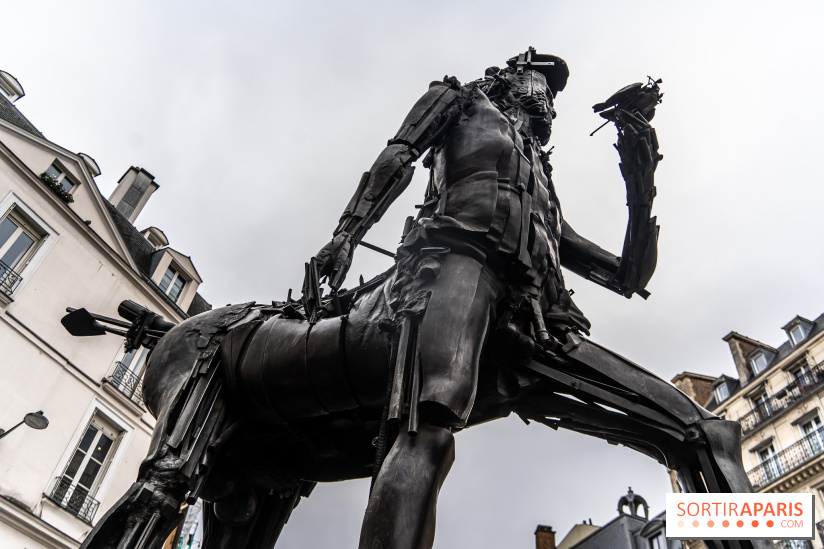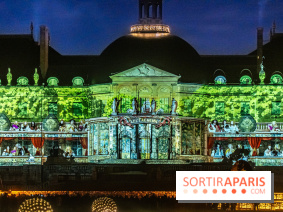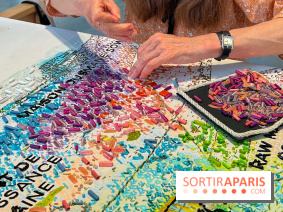As you cross the Place Michel-Debré, it's hard not to stop in front of this rough, martial-looking Centaur. If you have a good eye, as you approach, you may catch a glimpse of the smallest Statue of Liberty in Paris, of which there are 6 in all, all over the capital. Whose work is it? What does it represent? And do you know why it hides a tiny Statue of Liberty? We'll tell you!
César Baldaccini, renowned sculptor and member of the Nouveaux Réalistes movement, is best known for his compressions and for creating the famous César trophy for French cinema. Le Centaure was commissioned as part of a project initiated in the 1970s by Jack Lang, then Minister of Culture, to pay tribute to Pablo Picasso, who died in 1973. The work, inaugurated in 1988, depicts a hybrid mythological figure, halfway between man and animal, a theme dear to Picasso, who was fascinated by the myth of the Minotaur.
The Centaur's head is a self-portrait of Caesar himself, while a skyward-facing mask by Picasso is linked to the face by metal rods. This symbolic tribute illustrates the dialogue between two visionary artists, each in their own way marked by a reflection on human nature, mythology and modernity.
The decision to integrate a miniature replica of the Statue of Liberty inside the Centaur may come as a surprise. Yet Paris is already home to several versions of Bartholdi's famous monument, such as the one on the Île aux Cygnes or at the Musée des Arts et Métiers. In the Centaure, the presence of this hidden symbol reflects Picasso's ideals of freedom, which César wished to honor. The dove of peace, held in the Centaur's left hand, reinforces this universal theme.
Caesar, deeply affected by the technical evolution of the XXᵉ century, makes The Centaur a reflection on the transformation of man and nature. He emphasized that this century was the first "non-equestrian" in history, where the machine replaced the horse. This observation is reflected in the sculpture: metal plates, gears and nuts in places replace the skin and muscles of the mythological creature, transforming the Centaur into a figure halfway between past and future.
Le Centaure is also a declaration of admiration for Pablo Picasso, a pivotal artist of the XXᵉ century with a passion for mythology, particularly the Minotaur, often seen as the Centaur's inverted double. Caesar, by placing a Picasso mask on the forehead of his statue, links his own self-portrait to that of the Spanish master. The laurels adorning the sculpture's head, along with other symbolic details, evoke the artistic and pacifist ideals held by Picasso throughout his life.
Creating the Centaur was no easy task. Initially intended for another location, the work had to be redesigned to fit harmoniously into the Place Michel-Debré. Technical adjustments had to be made, notably to the proportions of the legs and the materials used. Every detail, right down to the original brushes that formed the tail, was worked on at length, eventually replacing these elements with a shovel and rake to reinforce the mechanical aesthetic.
In short, if you're passing through Saint-Germain, be sure to stop and admire Caesar's Centaur, a work deeply rooted in its time, which interweaves mythology, symbolism and modernity. With its miniature Statue of Liberty, this monument is a subtle reminder of universal ideals, while inviting us to reflect on the tensions between tradition and innovation.
Location
Caesar's Centaur Place Michel Debré
2 Place Michel Debré
75006 Paris 6
Recommended age
For all
